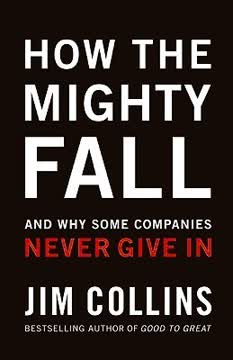Key Takeaways
1. Vision is the foundation of greatness: Define your purpose and values
Any organization, in order to survive and achieve success, must have a sound set of beliefs on which it premises all its policies and actions.
Core values and purpose. A compelling vision consists of two main components: core values/beliefs and purpose. Core values are the fundamental principles that guide all decisions and actions in a company. They should be authentic and unchanging, not just nice-sounding platitudes. Purpose is the fundamental reason for the company's existence beyond just making money. It provides meaning and inspiration.
Mission and long-term goals. In addition to values and purpose, a vision should include an ambitious long-term mission or "Big Hairy Audacious Goal" (BHAG). This provides a clear, compelling goal to unite and motivate people. Examples include:
- Become the most respected company in our industry by 2030
- Put a man on the moon by the end of the decade
- Democratize the automobile
Communicating the vision. Once defined, the vision must be clearly and consistently communicated throughout the organization. Use vivid language, stories, and imagery to bring it to life. Reference it constantly in decisions and company communications. A powerful vision provides meaning, motivation, and guidance for everyone in the company.
2. Leadership is about making people want to do what must be done
Leadership is the art of getting people to want to do what must be done.
Inspire, don't command. True leadership is about motivating and inspiring people to willingly work towards a common goal, not forcing compliance through authority. Great leaders create an environment where people are internally driven to do their best work in service of the mission.
Key leadership elements:
- Authenticity: Lead by example and consistently embody the values
- Personal touch: Get to know people and show you care about them as individuals
- Clear communication: Articulate the vision and priorities repeatedly
- High standards: Set ambitious goals and expect excellence
- Appreciation: Recognize and reward great work
- Ever forward mentality: Constantly push for progress and improvement
The best leaders combine personal humility with an unwavering commitment to the mission. They put the needs of the organization above their own ego. This "Level 5 Leadership" inspires deep loyalty and extraordinary effort from others.
3. "First who, then what": Get the right people on the bus
No company can consistently grow faster than its ability to get enough of the right people and still become a great company.
People before strategy. The most important decisions are not about what to do, but who to have on your team. Great companies focus on getting the right people in key positions before determining strategy or tactics. With the right people, you can adapt to any changes in the environment.
Key people principles:
- Hire for fit with core values, not just skills or experience
- Be rigorous in selection - take time to thoroughly evaluate candidates
- When in doubt, keep looking - don't settle for mediocre hires
- Be willing to let go of the wrong people, even if talented
- Put your best people on your biggest opportunities, not problems
Once you have the right people, give them freedom and responsibility. Trust them to figure out the best path to achieve the vision. This allows the organization to be highly adaptable while maintaining consistency of purpose.
4. Embrace the Genius of the AND: Reject false dichotomies
The test of a first-rate intelligence is the ability to hold two opposed ideas in the mind at the same time, and still retain the ability to function.
Transcend either/or thinking. Many leaders fall into the trap of seeing choices as binary - either A or B. Great leaders find ways to have both A AND B. They reject false trade-offs and find creative solutions to seemingly conflicting objectives.
Examples of the Genius of the AND:
- Purpose AND Profit
- Continuity AND Change
- Freedom AND Responsibility
- Discipline AND Entrepreneurship
- Humility AND Will
- Strategic Focus AND Opportunism
By embracing apparent paradoxes, companies can achieve breakthroughs that competitors miss. The ability to reconcile contradictory ideas is a hallmark of visionary thinking. Train yourself and your team to look for the "AND" when faced with difficult choices.
5. Confront the brutal facts while maintaining unwavering faith
You must retain unwavering faith that you can and will prevail in the end, regardless of the difficulties, and at the same time have the discipline to confront the most brutal facts of your current reality, whatever they might be.
The Stockdale Paradox. This principle, named after Admiral Jim Stockdale, captures the duality of realism and optimism needed to overcome adversity. Acknowledge and address the harsh realities of your situation, but never lose faith in ultimate success.
Creating a culture of candor:
- Lead with questions, not answers
- Engage in dialogue and debate, not coercion
- Conduct autopsies without blame
- Build "red flag" mechanisms for raising concerns
Great companies create an environment where the truth is heard, even when it's uncomfortable. They use data and honest feedback to make better decisions, while maintaining an unwavering commitment to the vision. This allows them to make necessary course corrections without losing sight of the ultimate goal.
6. Find your Hedgehog Concept: Passion, best-at, economic engine
The fox knows many things, but the hedgehog knows one big thing.
Focus on your sweet spot. The Hedgehog Concept is the intersection of three circles:
- What you are deeply passionate about
- What you can be the best in the world at
- What drives your economic engine
Finding this convergence provides clarity and focus for the entire organization. It helps you decide what to say yes to and, more importantly, what to say no to.
Disciplined thought process:
- Confront the brutal facts about your current capabilities
- Determine what you truly have the potential to be best at
- Understand the key economic drivers for your business model
- Align your passion with your strengths and market opportunity
The Hedgehog Concept is not a goal or strategy, but an understanding of what you can be great at. It takes time to develop through iterative analysis and experience. Once found, it provides a guiding framework for all strategic decisions.
7. Build momentum with the Flywheel Effect
Good to great comes about by a cumulative process—step by step, action by action, decision by decision, turn by turn of the flywheel—that adds up to sustained and spectacular results.
Consistent push creates breakthrough. Success is rarely the result of one big push or breakthrough moment. Instead, it comes from consistently pushing in the right direction over an extended period. Each small win builds momentum, eventually leading to a breakthrough.
The Flywheel process:
- Make consistent pushes in a specific direction
- Build momentum through visible results
- People get excited and put in more effort
- Momentum builds further, creating a virtuous cycle
Great companies focus on turning the flywheel in their chosen direction, rather than looking for a single defining action. They understand that there is no miracle moment, just consistent effort applied over time. This patient, disciplined approach ultimately produces far greater results than flashy but inconsistent initiatives.
8. Practice productive paranoia to survive and thrive in uncertainty
Leading in a turbulent world is like being a great rock climber. You have to prepare meticulously, with backup safety ropes in place and perfect readiness for changing conditions.
Build buffers and prepare for the worst. Successful leaders in uncertain environments maintain hypervigilance to potential threats. They build in safety margins, have contingency plans, and are always asking "what if?"
Key elements of productive paranoia:
- Maintain large cash reserves
- Limit risk in good times
- Bound risk by constraining growth
- Sensitize yourself to changing conditions
- Regularly conduct scenario planning
This approach allows companies to survive unexpected shocks that cripple less prepared competitors. It also enables them to capitalize on opportunities when others are struggling. Productive paranoia is about turning fear into preparation, not paralysis.
9. Do more clock building, less time telling to create an enduring company
Having a great idea or being a charismatic visionary leader is "time telling"; building a company that can prosper far beyond the presence of any single leader and through multiple product life cycles is "clock building."
Build the system, don't be the system. Great leaders focus on creating an organization that can thrive without them, rather than being irreplaceable themselves. They build mechanisms, culture, and systems that outlast any individual.
Clock-building principles:
- Develop a deep leadership bench
- Create robust succession plans
- Build a strong, self-sustaining culture
- Implement systems and processes that don't rely on specific individuals
- Focus on the company as the ultimate creation, not the product
The goal is to create an organization that is built to last for generations, adapting to changing conditions while maintaining its core purpose and values. This requires letting go of ego and thinking beyond your own tenure as a leader.
10. Preserve the core AND stimulate progress to achieve lasting greatness
Visionary companies distinguish their timeless core values and enduring purpose (which should never change) from their operating practices and business strategies (which should be changing constantly in response to a changing world).
Balance continuity and change. Great companies are able to preserve their fundamental purpose and values while continuously adapting their strategies and practices. This allows them to maintain a stable foundation while evolving to meet new challenges.
Key practices:
- Clearly define and reinforce core values and purpose
- Encourage experimentation and innovation within that framework
- Set ambitious long-term goals (BHAGs) to drive progress
- Create mechanisms to preserve the core (e.g. rigorous hiring practices)
- Build adaptive systems to drive change (e.g. decentralized decision-making)
This dual focus allows companies to have both the stability of enduring principles and the flexibility to thrive in changing environments. It reconciles the need for consistency with the imperative for innovation and growth.
11. Get a high return on luck through preparation and execution
Luck favors the persistent.
Capitalize on both good and bad luck. All companies experience both good and bad luck. What separates great companies is how they respond to and capitalize on luck events. They get a higher return on luck through preparation and superior execution.
Strategies for high ROL (Return on Luck):
- Build buffers to absorb bad luck
- Spot luck events quickly and take decisive action
- Execute flawlessly to maximize good luck opportunities
- Learn and adapt from both positive and negative experiences
- Stay in the game long enough for luck to work in your favor
Great leaders understand that luck plays a role in success, but they don't rely on it. They create conditions to benefit from good luck and mitigate the impact of bad luck. This approach turns luck from a wild card into a manageable variable.
12. Achieve consistent tactical excellence through disciplined people and action
Greatness is not a function of circumstance. Greatness, it turns out, is largely a matter of conscious choice and discipline.
Culture of discipline. Sustainable success comes from consistently executing well on the small things. This requires building a culture of disciplined people who engage in disciplined thought and take disciplined action.
Key elements of tactical excellence:
- Rigorous hiring and training processes
- Clear performance expectations and accountability
- Systems for tracking and improving key metrics
- Continuous learning and process improvement
- Rewarding and reinforcing desired behaviors
Great companies create an environment where mediocrity is not tolerated and excellence is expected. They understand that strategy without execution is worthless. By focusing on consistent tactical excellence, they are able to outperform competitors over the long run, even without breakthrough innovations or market dominance.
Last updated:
FAQ
What's Beyond Entrepreneurship: Turning Your Business into an Enduring Great Company about?
- Focus on Enduring Greatness: The book is a guide for leaders of small to mid-sized enterprises aiming to build companies that endure and thrive over time.
- Research-Based Insights: It combines decades of research into what makes great companies successful, drawing from the author's extensive studies and experiences.
- Mentorship and Legacy: The book honors co-author Bill Lazier, emphasizing the importance of mentorship and the impact of great leaders on aspiring entrepreneurs.
Why should I read Beyond Entrepreneurship by Jim Collins?
- Practical Guidance: Offers actionable insights and frameworks to help entrepreneurs navigate the complexities of building a successful business.
- Timeless Principles: Distills lessons from successful companies, making it relevant for both new and established businesses.
- Inspirational Stories: Provides motivation through stories of successful leaders and companies, encouraging readers to pursue their own entrepreneurial journeys.
What are the key takeaways of Beyond Entrepreneurship?
- Vision is Essential: A clear and shared vision is crucial for guiding a company and aligning its efforts towards common goals.
- First Who, Then What: Emphasizes getting the right people on board before determining the company's direction.
- Genius of the AND: Effective leaders balance seemingly opposing ideas, such as creativity and discipline, to foster a thriving organizational culture.
What is the Collins-Porras Vision Framework in Beyond Entrepreneurship?
- Three Components: The framework consists of core values and beliefs, purpose, and mission, creating a compelling vision for the organization.
- Core Values and Beliefs: Fundamental principles that guide the company’s actions and decisions, shaping its culture and identity.
- Purpose and Mission: Purpose is the overarching reason for the company’s existence, while mission is a specific, achievable goal providing focus and direction.
What does the term BHAG mean in Beyond Entrepreneurship?
- Big Hairy Audacious Goal: A BHAG is a clear, compelling, and ambitious goal that serves as a focal point for the organization’s efforts.
- Motivational Impact: Setting a BHAG can galvanize employees and create a sense of urgency and excitement around achieving significant milestones.
- Long-term Commitment: BHAGs typically require sustained effort over 10 to 25 years, pushing the organization to continually strive for excellence.
How does Beyond Entrepreneurship define effective leadership?
- Art of Motivation: Leadership is described as “the art of getting people to want to do what must be done,” emphasizing motivation and inspiration.
- Level 5 Leadership: Combines personal humility with an indomitable will to achieve a greater cause.
- Authenticity and Communication: Effective leaders are authentic, communicate clearly, and foster an environment where open dialogue and feedback are encouraged.
What is the Stockdale Paradox in Beyond Entrepreneurship?
- Confronting Brutal Facts: Emphasizes the need to confront harsh realities while maintaining unwavering faith in eventual success.
- Balance of Optimism and Realism: Leaders must be realistic about challenges while remaining hopeful and committed to overcoming them.
- Application in Business: Crucial for navigating uncertainty and ensuring organizations remain resilient in the face of adversity.
What role does luck play in building a great company according to Beyond Entrepreneurship?
- Return on Luck: Successful companies do not necessarily experience more luck but make better use of the luck they encounter.
- Persistence is Key: The idea that “luck favors the persistent” underscores the importance of resilience and determination in achieving long-term success.
- Learning from Setbacks: Companies that face and overcome challenges often develop the character and capabilities necessary for enduring greatness.
How can I apply the First Who, Then What principle from Beyond Entrepreneurship in my business?
- Prioritize Hiring: Focus on getting the right people in key positions before determining the company’s strategy or direction.
- Assess Key Seats: Regularly evaluate whether the right individuals occupy critical roles and make necessary adjustments for optimal performance.
- Foster Accountability: Encourage a culture where team members are responsible for their contributions and empowered to make decisions aligning with the company’s vision.
What is the Map framework in Beyond Entrepreneurship?
- Four Stages of Greatness: Consists of disciplined people, disciplined thought, disciplined action, and building to last, each building upon the previous.
- Inputs and Outputs: Distinguishes between inputs (leadership, vision, strategy) and outputs (results, impact, endurance).
- Dynamic Process: Emphasizes that the journey to greatness is ongoing, requiring companies to adapt and renew themselves continually.
What are the four basic principles of setting effective strategy in Beyond Entrepreneurship?
- Vision-Driven Strategy: Strategy must stem from the company’s vision, ensuring alignment between goals and methods.
- Leverage Strengths: Focus on the company’s unique strengths and capabilities to gain a competitive advantage.
- Realistic Approach: Strategies must be realistic, considering both internal constraints and external factors.
- Inclusive Participation: Involve those who will implement the strategy, fostering commitment and accountability.
How does Beyond Entrepreneurship address the concept of innovation?
- Continuous Innovation: Essential for being an enduring great company, fostering a culture where new ideas are encouraged and implemented.
- Receptivity to Ideas: Importance of being open to ideas from inside and outside the organization, empowering all employees to contribute.
- Experimentation and Learning: Innovation requires a willingness to experiment and learn from mistakes, with failures providing valuable insights.
Review Summary
Beyond Entrepreneurship receives high praise from readers, with an average rating of 4.09 out of 5. Reviewers appreciate its focus on creating sustainable growth and lasting companies. Many find the concepts still relevant despite its age, offering valuable insights for entrepreneurs scaling their businesses. Readers highlight the book's practical advice, in-depth perspectives on leadership, vision, strategy, and innovation. Some note its distinction from Collins' later works, while others appreciate its timeless principles. The book is recommended for entrepreneurs and business leaders seeking to build enduring, successful organizations.
Similar Books

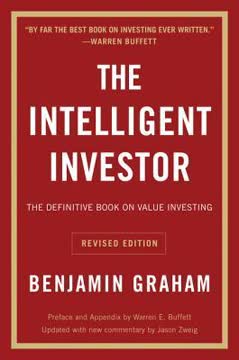
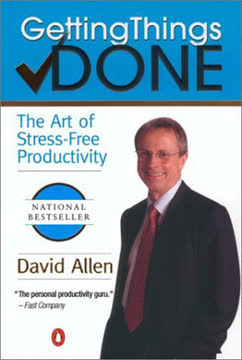


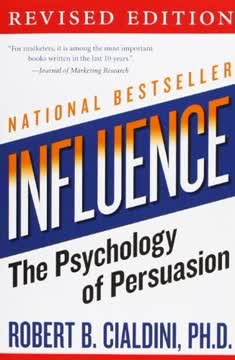



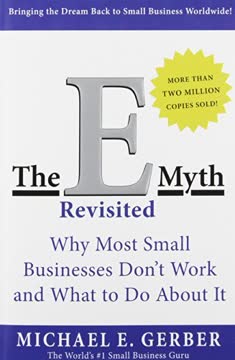
Download PDF
Download EPUB
.epub digital book format is ideal for reading ebooks on phones, tablets, and e-readers.




